Refer to the exhibit, which shows a network diagram.

Which IPsec phase 2 configuration should you impalement so that only one remote site is connected at any time?
Exhibit.
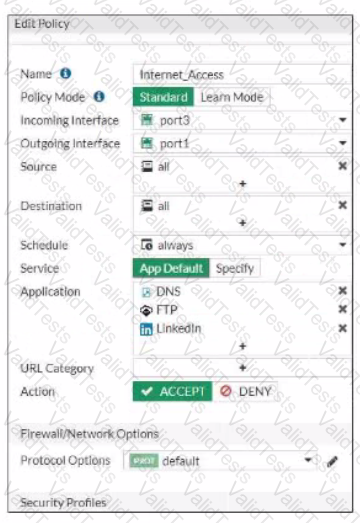
Refer to the exhibit, which contains a partial policy configuration.
Which setting must you configure to allow SSH?
You created a VPN community using VPN Manager on FortiManager. You also added gateways to the VPN community. Now you are trying to create firewall policies to permit traffic over the tunnel however, the VPN interfaces do not appear as available options.
Refer to the exhibit, which shows device registration on FortiManager.
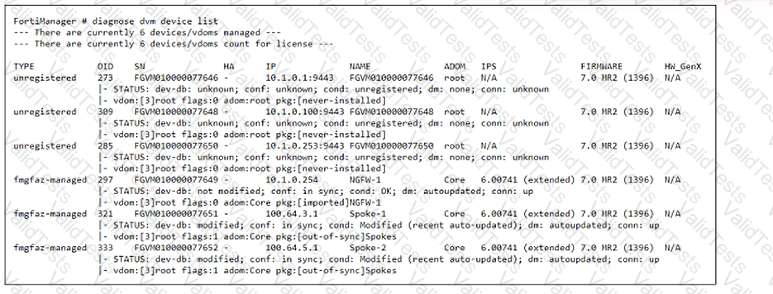
What can you conclude about the Spoke-1 and Spoke-2 configurations with respect to the information cond: Modified (recent auto-updated)?
Refer to the exhibit, which shows config system central-management information.
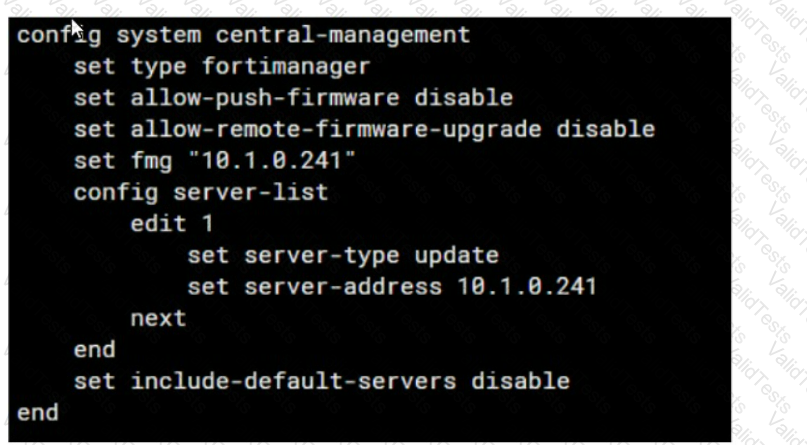
Which setting must you configure for the web filtering feature to function?
An administrator is configuring two FortiGate devices in an HA cluster. While configuring the devices, the administrator issues the following commands on both HA cluster members:

In which two ways do these commands impact the HA cluster? (Choose two.)
Refer to the exhibit, which contains a TCL script configuration on FortiManager.
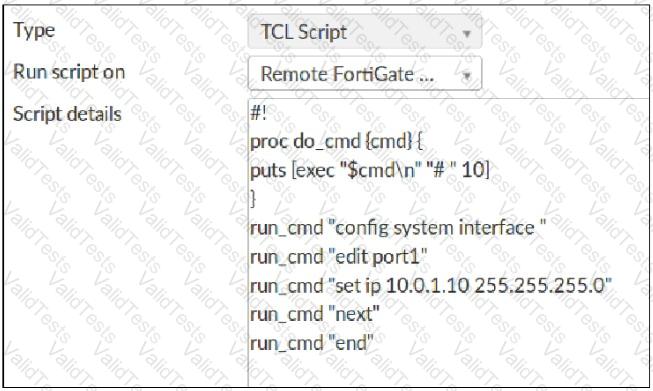
An administrator has configured the TCL script on FortiManager, but the TCL script failed
to apply any changes to the managed device after being run.
Why did the TCL script fail to make any changes to the managed device?
In which two ways does fortiManager function when it is deployed as a local FDS? (Choose two)
Refer to the exhibit, which contains a partial BGP combination.
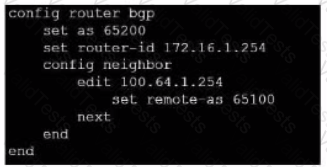
You want to configure a loopback as the OGP source.
Which two parameters must you set in the BGP configuration? (Choose two)
Exhibit.
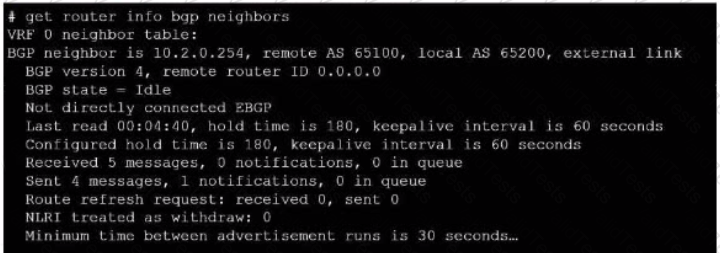
Refer to the exhibit, which provides information on BGP neighbors.
Which can you conclude from this command output?